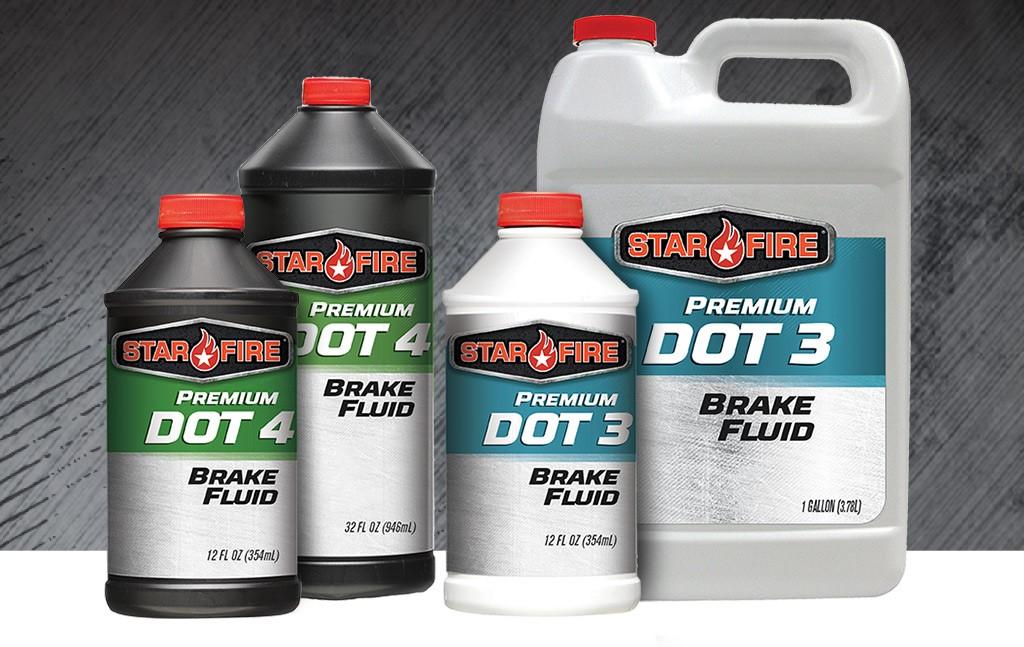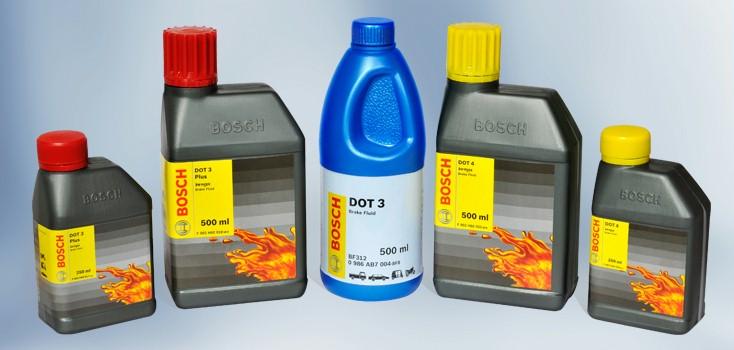If you are looking for the right fluid for your car, a comparison of DOT 3 vs DOT 4 brake fluid will help you to decide better.
Contents
What Is the Difference Between DOT 3 vs DOT 4 Brake Fluid?
The brake fluid is the lifeblood of the braking system. It keeps the braking components lubricated so that they respond promptly when you press the brake pedal.
With the help of the fluid, the piston can comfortably compress the rotors to slow down the vehicle. DOT 3 and DOT 4 are two most common types used in automobiles.
DOT 3 is the most common and popular brake fluid type of truck and cars. DOT 4 is also gaining momentum due to its compatibility with anti-lock braking system and traction control.
The first one is the standard, low-cost option for average cars where there is little chance for the drivers to engage in aggressive braking actions.
But, automobiles like racing cars and police vehicles that need frequent vigorous braking use DOT 4 fluid. Let’s find out some more points of difference between DOT3 vs DOT4:

1. Boiling Point
The major difference between DOT 3 vs DOT 4 is the boiling point – their tenacity to absorb water. DOT 3 is more prone to assimilate water because it has a lower boiling point.
For this reason, it boils easily under hard and rough braking, which could ruin the braking components and cause subpar braking performance.
The DOT 4 fluid can easily replace DOT 3 but the second one should not be used as an alternative to the DOT 4 type until it’s absolutely necessary.
2. The Chemical Structure
Another slight difference between DOT 3 vs DOT 4 brake fluid is their chemical components. DOT 3 has a blend of ether and polyalkylene glycol whereas a mixture of glycol and borate creates the DOT 4 fluid.
The glycol-ether blend holds very well in hot and wet conditions, which is perfect for regular vehicles where the brakes get heated up easily.
On the other hand, DOT 4’s chemical ingredients show a high level of water tolerance and stability under high temperatures.
SEE MORE
3. Boiling Capacity
DOT 3 is the winner in this comparison section between DOT 3 vs DOT 4 brake fluid. It functions well in both water and open air because it has both wet and dry boiling capacity. DOT 4 has an excellent dry boiling capacity but it does not work well in water.
Which one should you choose? DOT 3 or DOT 4 brake fluid? Well, the first one is the best option if you are driving a standard vehicle.
However, if it’s a racing car or you like rough driving, DOT 4 will take better care of the braking components.

Are There Any Cautions to be Aware of?
Yes, there are a few things to be aware of. Both fluid types eat paint, so don’t spill them on the car body. Also, they can react badly if mixed with other fluids used in a vehicle.
You should keep the fluids in tightly sealed containers. The moisture in the air degrades their chemical components. So, it’s not safe to use the brake fluid from an open bottle.
FAQs on DOT 3 vs DOT 4 Brake Fluid
-
Can I use DOT 4 brake fluid in a system designed for DOT 3?
You can generally use DOT 4 in a system designed for DOT 3. However, it’s essential to thoroughly flush and replace all the old fluid to avoid compatibility issues.
-
Can I mix DOT 3 and DOT 4 brake fluids?
Mixing brake fluids is generally not recommended. It’s best to use one type consistently to ensure proper performance and avoid potential compatibility issues.
-
How often should I change my brake fluid?
Brake fluid should be changed according to your vehicle manufacturer’s recommended maintenance schedule, typically every 2 to 3 years. However, if you notice a decrease in braking performance or signs of contamination, it should be changed sooner.
-
Can I use DOT 5 brake fluid instead of DOT 3 or DOT 4?
DOT 5 brake fluid is silicone-based and not compatible with DOT 3 or DOT 4, which are glycol-based. Using DOT 5 requires a complete system flush and should only be done if your vehicle is specifically designed for it.
-
Which brake fluid should I choose for my everyday vehicle?
For regular driving conditions, DOT 3 brake fluid is sufficient. Reserve DOT 4 for high-performance vehicles or those subjected to heavy-duty braking demands.
-
Can using the wrong brake fluid cause brake system damage?
Using the wrong brake fluid can potentially damage the braking system and compromise safety. Always use the type of brake fluid recommended for your vehicle to ensure proper performance and safety.
-
Are there any special precautions I should take when handling brake fluid?
Yes, brake fluid is corrosive and can damage paint and other materials. When handling it, wear safety glasses and avoid spilling it on your vehicle’s paint or any other surfaces. Additionally, store brake fluid in a tightly sealed container.
-
Are there any performance benefits to using higher-grade brake fluids, such as DOT 5.1 or racing brake fluids?
Higher-grade brake fluids, like DOT 5.1 or racing fluids, offer even higher boiling points and improved resistance to brake fade.
These are typically used in high-performance and racing applications where extreme braking conditions are common. However, for regular daily driving, DOT 3 or DOT 4 brake fluids are usually sufficient.
Watch the video below to see the difference between Dot 3, 4, 5 and 5.1 brake fluid!
In conclusion, the choice between DOT 3 vs DOT 4 brake fluid depends on your specific vehicle and driving needs.
DOT 3 is suitable for most everyday driving situations and is widely available and less expensive.
On the other hand, DOT 4 offers higher boiling points, making it more suitable for high-performance or heavy-duty applications, such as racing or towing.



